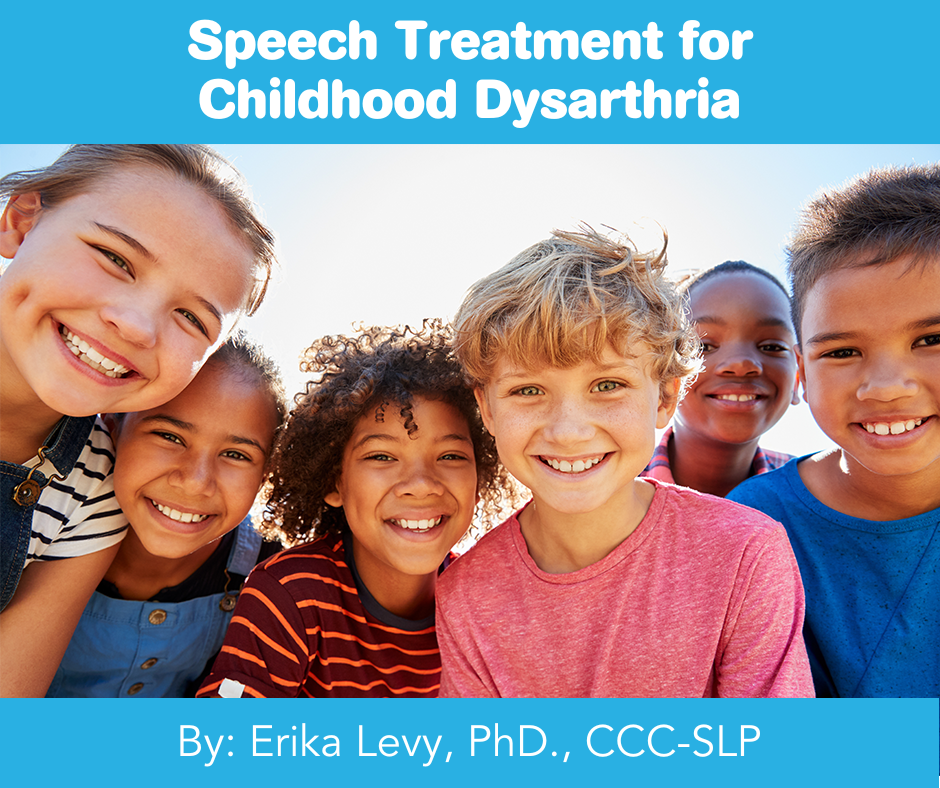
12 Dec Speech Treatment For Childhood Dysarthria
Course Abstract:
This presentation provided an overview of evidence-based treatments for childhood dysarthria, including Levy’s Speech Intelligibility Treatment (SIT); a dual-focus speech treatment targeting increased articulatory excursion and vocal intensity. Training in SIT was provided. An online quiz was offered to speech-language pathologists wishing to become certified in this treatment technique.
Presented By: Erika Levy, PhD, CCC-SLP
This course is offered for 0.10 ASHA CEU’s (Advanced level, Professional area)

Learning Objectives:
- Describe 3 evidence-based speech treatments for children with dysarthria.
- Name the 2 prompts implemented in Speech Intelligibility Treatment.
- Name an outcome variable that may be improved by an evidence-based treatment for childhood dysarthria.
Timed Agenda:
Minutes 0-5 Introduction to dysarthria
Minutes 6-40 Development, components, and use of Speech Intelligibility Treatment (SIT)
Minutes 41-55 Research behind SIT
Minutes 56-68 Summary, future applications and conclusion
Course Abstract:
This presentation provided an overview of evidence-based treatments for childhood dysarthria, including Levy’s Speech Intelligibility Treatment (SIT); a dual-focus speech treatment targeting increased articulatory excursion and vocal intensity. Training in SIT was provided. An online quiz was offered to speech-language pathologists wishing to become certified in this treatment technique.
Presented By: Erika Levy, PhD, CCC-SLP
This course is offered for 0.10 ASHA CEU’s (Advanced level, Professional area)

Learning Objectives:
- Describe 3 evidence-based speech treatments for children with dysarthria.
- Name the 2 prompts implemented in Speech Intelligibility Treatment.
- Name an outcome variable that may be improved by an evidence-based treatment for childhood dysarthria.
Timed Agenda:
Minutes 0-5 Introduction to dysarthria
Minutes 6-40 Development, components, and use of Speech Intelligibility Treatment (SIT)
Minutes 41-55 Research behind SIT
Minutes 56-68 Summary, future applications and conclusion
Credentials:
Hours of Operation:
Treatment locations:
Address:
,
Phone:
Email:
Overall Treatment Approach:
Percent of CAS cases:
Parent Involvement:
Community Involvement:
Professional consultation/collaboration:
Min Age Treated:
Max Age Treated:
Insurance Accepted:




